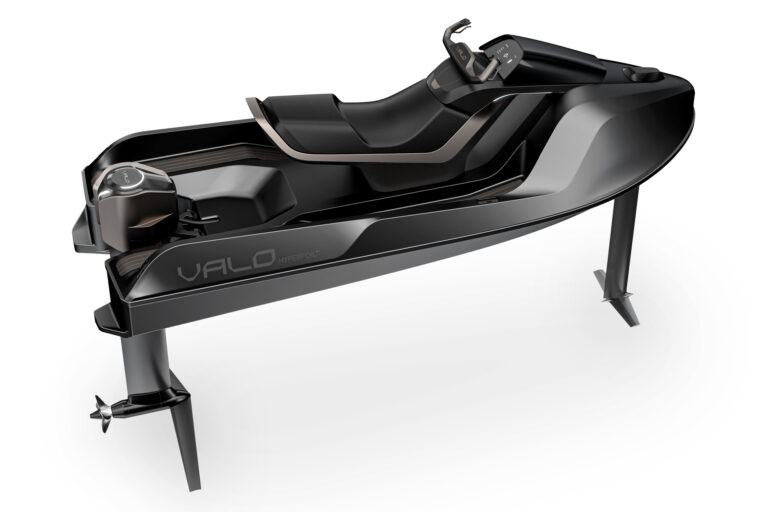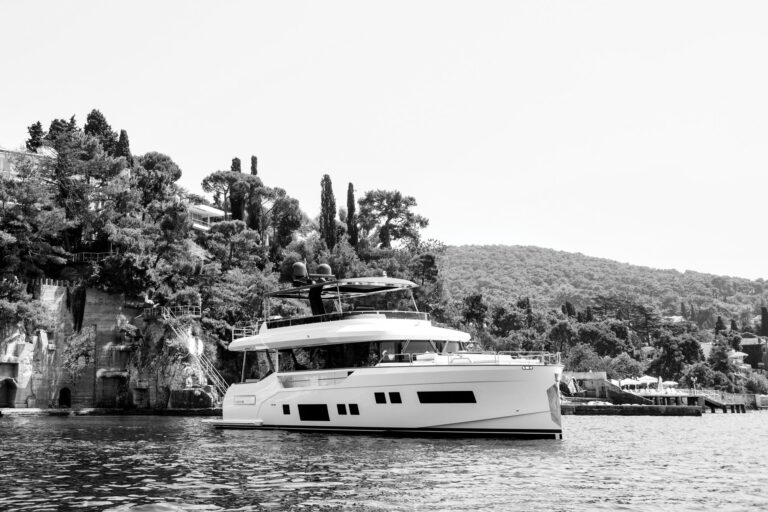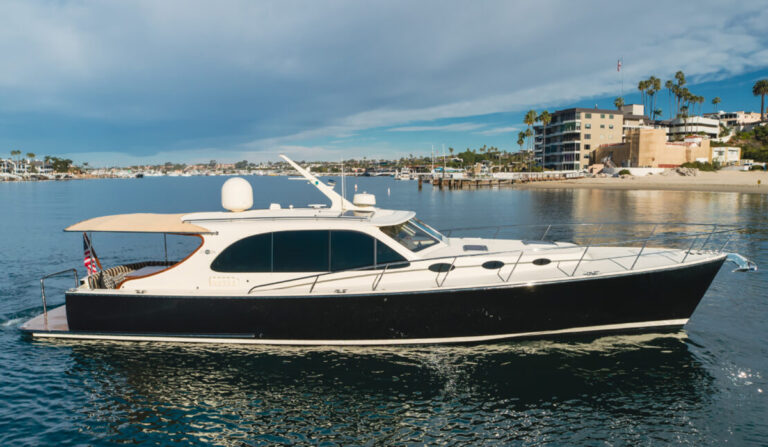
Ocean Alexander 120
The artistic success of a design depends as much on the client’s skillful presentation of the vision as it does on the designer’s ability to render that vision a reality. This collaboration is especially important if the result has to appeal to a wide variety of customers. Although the universe of buyers for a 120-foot motoryacht is small, a fresh, balanced and restrained design stands a better chance of attracting more buyers over a longer period of time than does an extreme creation.
Ocean Alexander and Evan K. Marshall had a symbiotic relationship and this type of design in mind when they developed the Megayacht Series. Although the 120, so far the smallest of the series, shares a few design elements with other yachts of her class, the way in which Marshall combined these has created a crisp and engagingly distinguished yacht. If we place this yacht on an aesthetic teeter-totter, we’ll see how the clipper bow and the arc of the reverse transom balance the hull’s shape. These curvatures appear to be identical, and establish the yacht’s forward-thrusting presence.
Rising from the main deck in an arc that reminds me of a ski-jumper’s body in flight, the cantilevered structure that defines the look of the top deck and flying bridge adds significantly to the theme of forward motion. As though this aesthetic needed emphasis, the radar arch, the after end of the flying bridge and the trailing edge of the cockpit on the third deck further urge the look forward. If the treatment seems like overkill, imagine how clunky the OA 120 would appear if any of these raking elements in the superstructure were vertical, or nearly so.
On the other hand, vertical surfaces and motifs, carefully proportioned and integrated, add visual interest, which is another way to balance a design. Marshall chose tall, rectangular windows (portholes, deadlights, call them what you will) to light the forward staterooms on the main deck. Their size and shape reduce our perception of mass in the forward sections of the topsides. Farther aft, smaller windows of the same shape light the accommodations and break up an otherwise boring surface. The spaces belowdecks determine the location of these windows, but their harmonious grouping elevates function to an artistic level. The grouping on the port side differs from that on the starboard side, because the galley has two windows abaft the trio of the master stateroom instead of the one you see here.
This yacht has two sheer lines — one that delineates the foredeck and another that delineates the main deck. Marshall has capped the flaring forward sections with a vertical — or nearly vertical — surface from the top of the windows to the foredeck’s sheer line. A character line marks the transition from flare to flat and complements the blend line above it. The dart-shape element — point forward, body aft — severs the topsides and reveals the passageway from the afterdeck to the foyer leading into the accommodations on the main deck, and to the stairs leading up to the Portuguese bridge. The point of the dart splits the forward windows, and its run aft ends in a break at the main deck’s sheer similar to that of a sport-fishing boat. The upright windows in the pilothouse add to the salty character of this yacht, provide maximal interior volume and allow the large Portuguese bridge.
Casual observers may think that Ocean Alexander teeters on a tightrope with this design, but I’ll take my chances with the company and predict success. Construction by Christensen Shipyards to MCA class won’t hurt the cause.
LOA: 121’2″
LWL: 102’10”
Beam: 25’2″
Draft: 6’2″
Displ.: 395,000 lb. (est. half load)
Fuel: 7,000 gal.
Water: 1,200 gal.
Engines: 2 x 1,920 hp MTU 12V 2000 M 94 diesels
Ocean Alexander, 954-779-1950; www.oceanalexander.com
_View a complete gallery of the Ocean Alexander 120._
Subscribe to the Yachting Life newsletter for cruising and chartering guides, new boat announcements, event updates, special offers and more!









